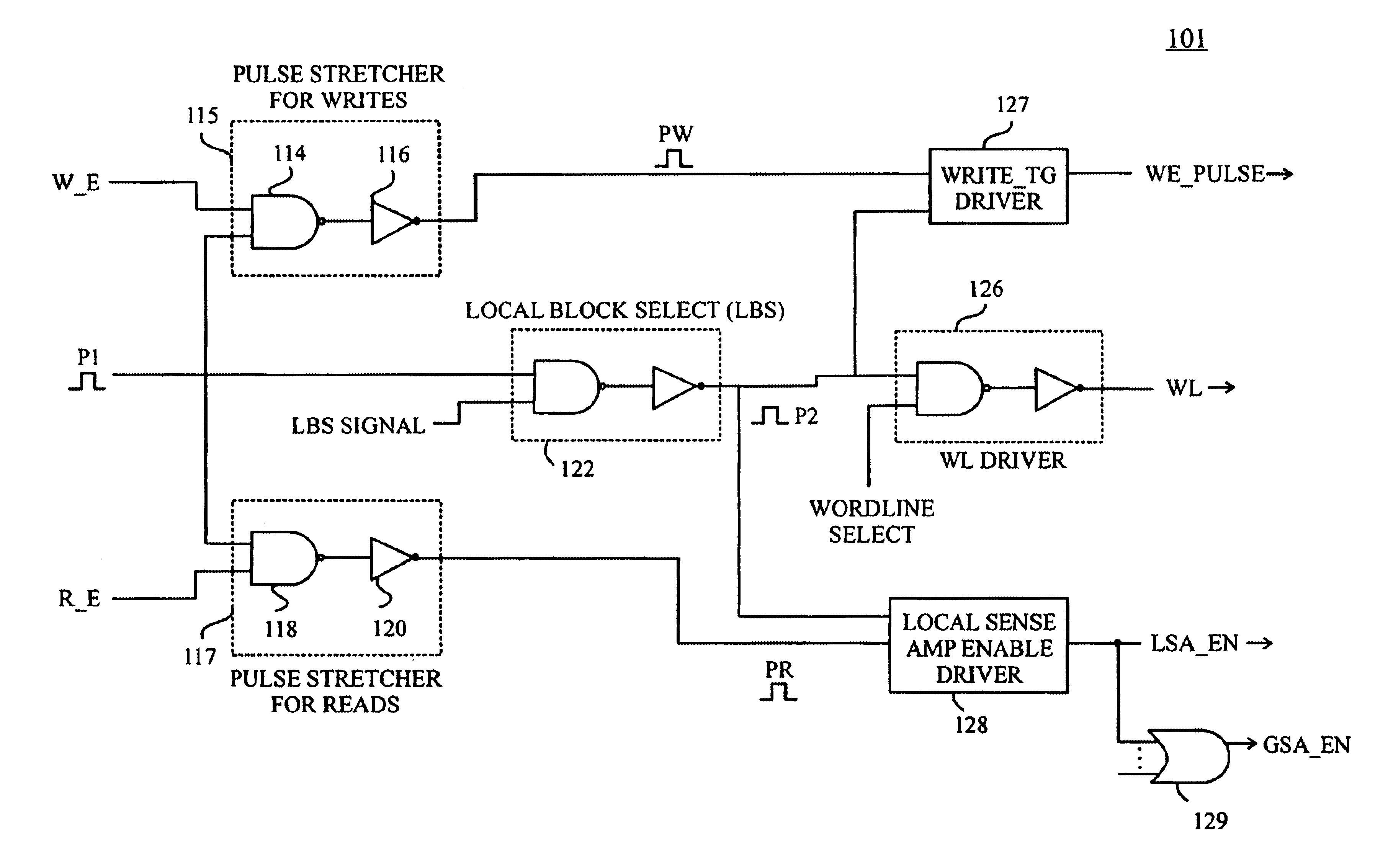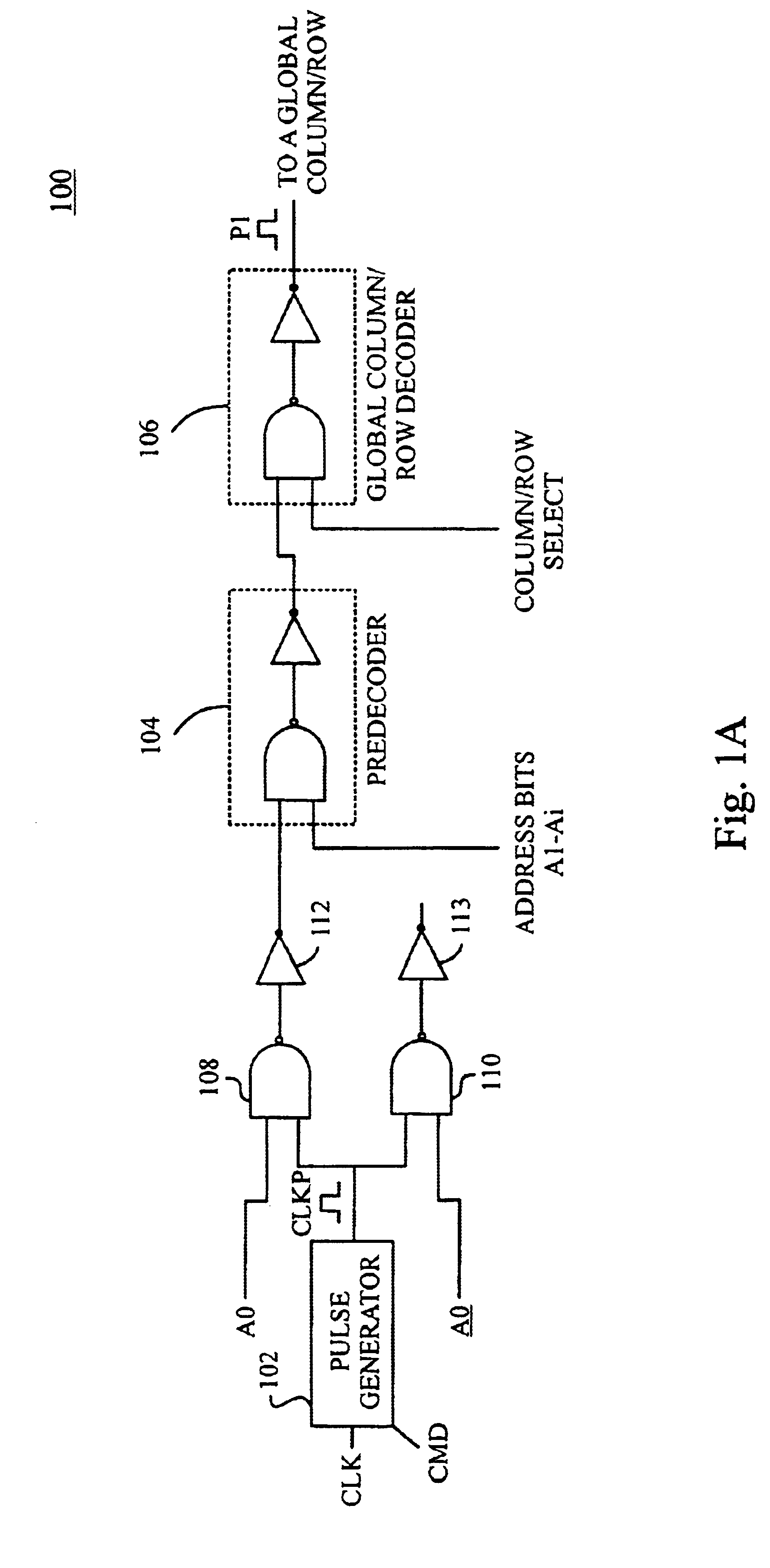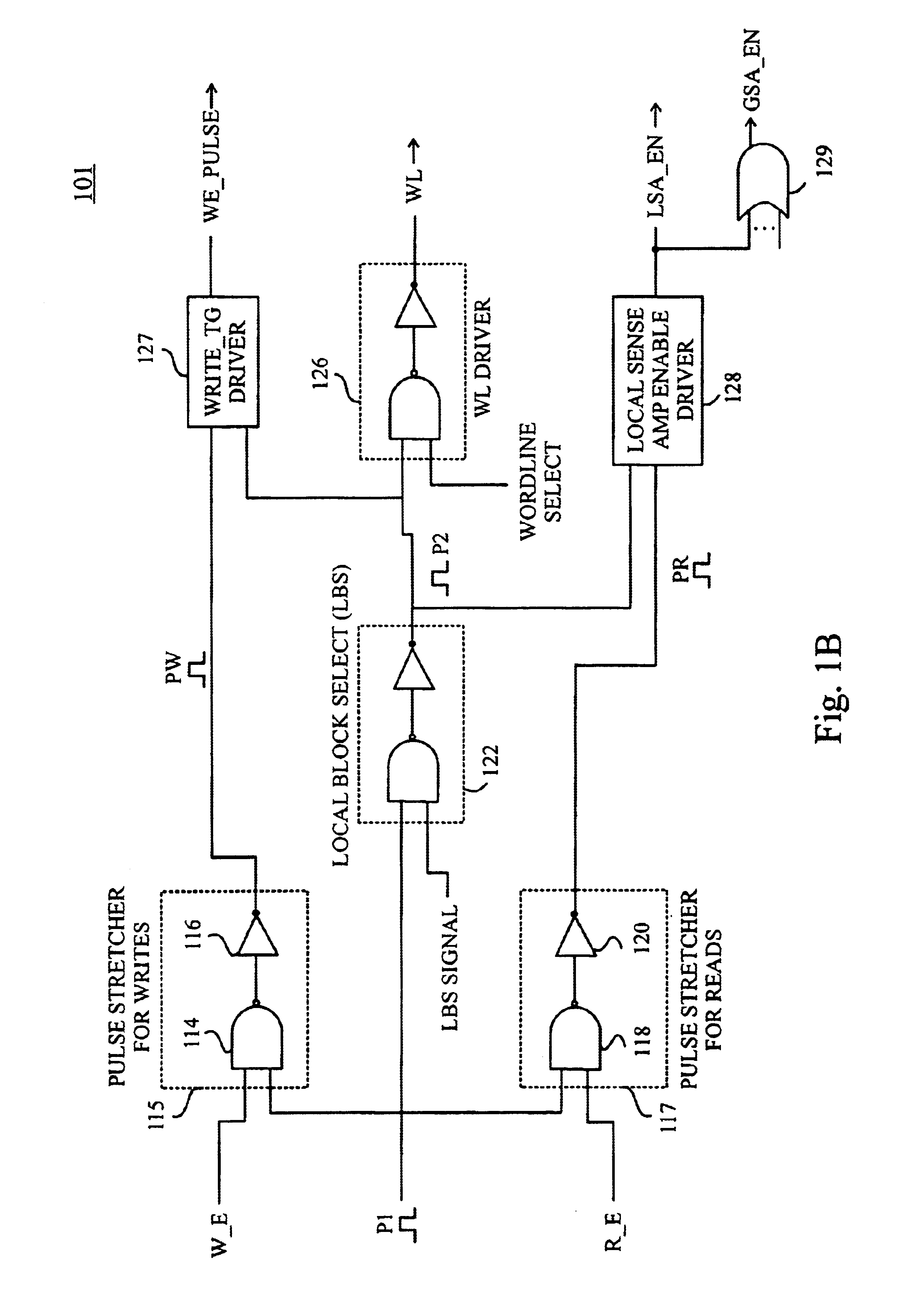Decode path gated low active power SRAM
a low active power, path gate technology, applied in static storage, information storage, digital storage, etc., can solve the problems of imposing stringent design constraints on active power, power consumption caused primarily by logic state switching, etc., to reduce switching power
- Summary
- Abstract
- Description
- Claims
- Application Information
AI Technical Summary
Benefits of technology
Problems solved by technology
Method used
Image
Examples
Embodiment Construction
Preferred embodiments of the present invention will be described hereinbelow with reference to the accompanying drawings. In the following description, a detailed description of well-known memory functions and architectures will not be provided to avoid obscuring the invention in unnecessary detail.
The present invention is directed to circuits and methods that provide timing and control for memory access operations in memory devices such as SRAM devices, for example, by propagating a control pulse along a decode path from which a sequence of control pulses are generated at points in the decode path to synchronize activation of wordlines and sense amplifiers and precharge / equalization of bit lines. Advantageously, circuits and methods according to the present invention enable a dramatic reduction in the switching power dissipation of conventional synchronous (clocked) SRAM arrays without incurring the performance penalties that arise from eliminating the clock distribution network in...
PUM
 Login to View More
Login to View More Abstract
Description
Claims
Application Information
 Login to View More
Login to View More - R&D
- Intellectual Property
- Life Sciences
- Materials
- Tech Scout
- Unparalleled Data Quality
- Higher Quality Content
- 60% Fewer Hallucinations
Browse by: Latest US Patents, China's latest patents, Technical Efficacy Thesaurus, Application Domain, Technology Topic, Popular Technical Reports.
© 2025 PatSnap. All rights reserved.Legal|Privacy policy|Modern Slavery Act Transparency Statement|Sitemap|About US| Contact US: help@patsnap.com



